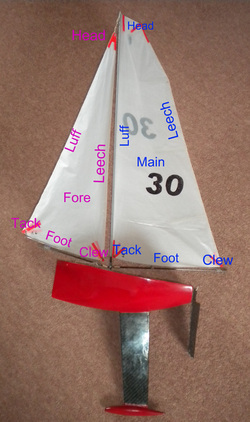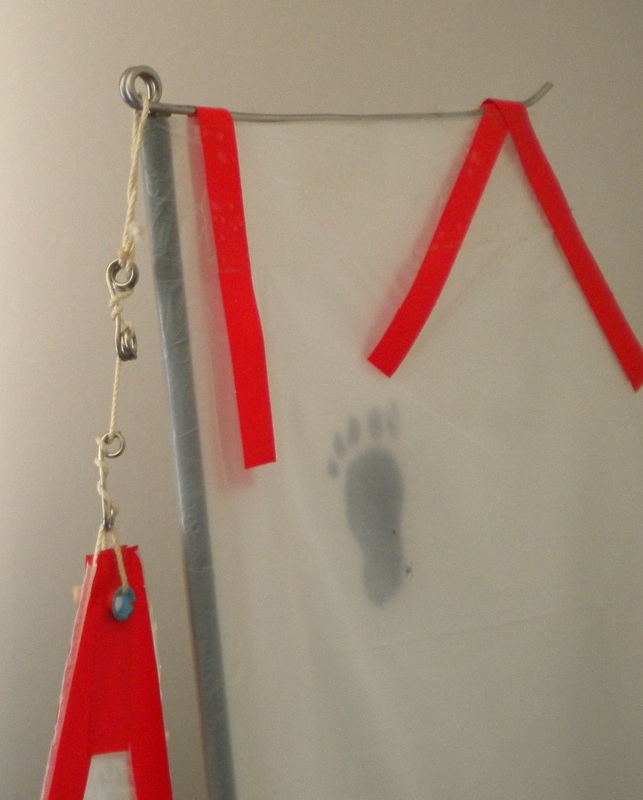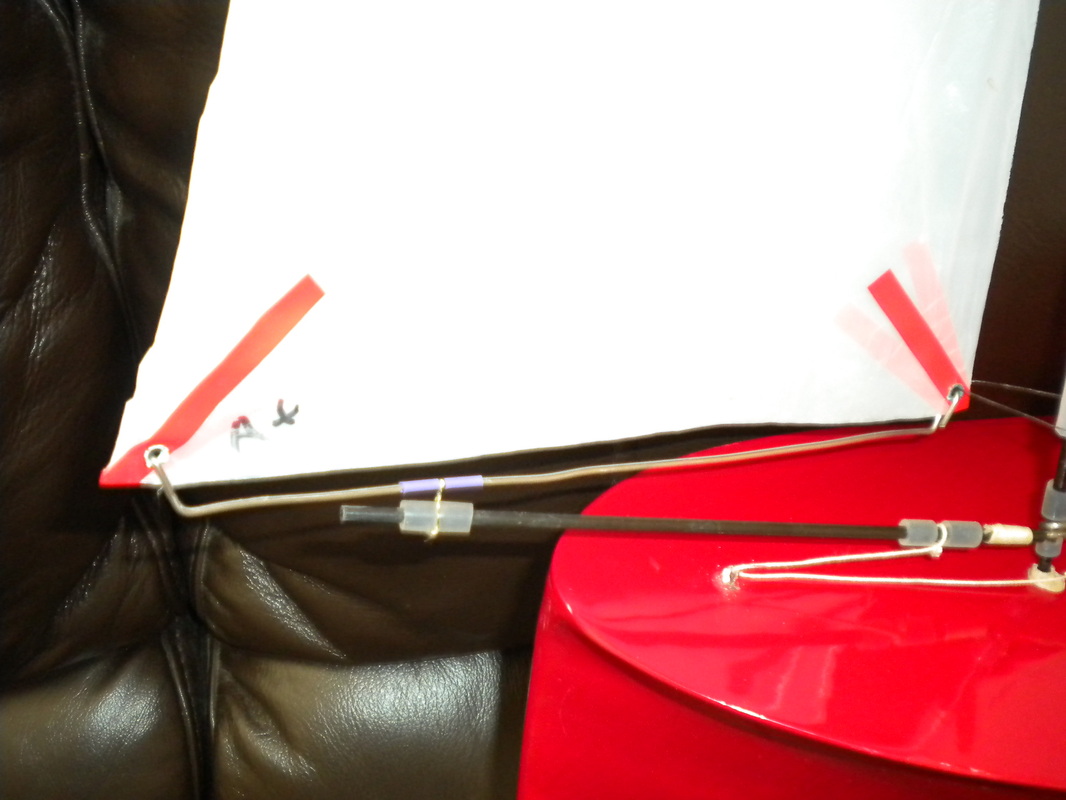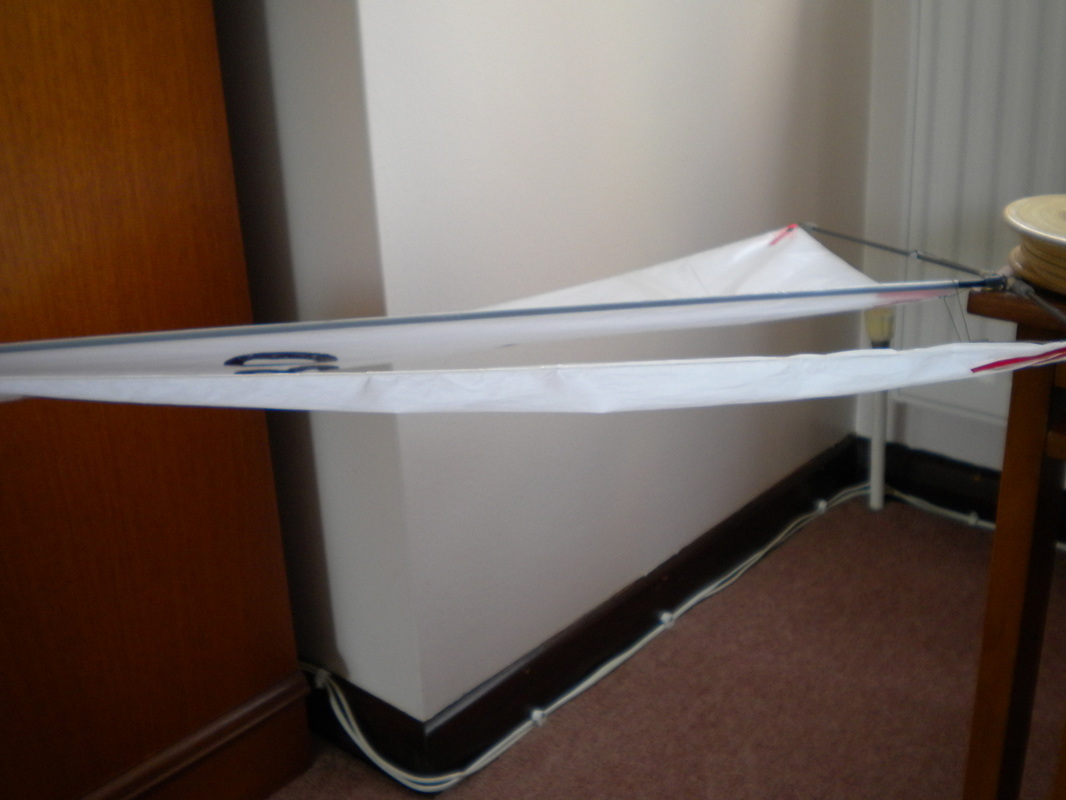Setting Up Soft Sails by Peter Jackson
This paper deals with the intricacies of setting soft sails when they are designed to be used on a swing rig.
|
For those of us unfamiliar with the terminology used when refering to parts of a sail I have included this diagram which gives reference to the main components, it can be enlarged by clicking on it. |
|
The main reasons for making soft sails are their lightness and the way they set when in use, they are cheap and relatively easy to make. They are probably more efficient whilst going downwind as you get the full effect of a gull wing every time.
The first thing to say is that to get the best performance the sails have to set incredibly slack to get the best drive. The main thing to note is that the tension through the foresail and main are linked and when at rest if you can see a marked diagonal tension line in the main the sails are set too tight. |
These sails are constructed so that they have a fold line either in the luff line on the foresail or around the mast on the main, and are joined by heat-sealing at their leech so the sails are effectively bags. The heat sealing is achieved by means of a soldering iron run along the edge of a metal rule over the two layers of plastic bag.
|
The booms are connected together at the mast by means of a piece of looped wire, which has a greater diameter than that of the mast. The mast fits through the loop and is reacted against by a stop, which can be fixed or movable by overcoming friction. The booms are connected to the pivot loop by means of epoxy and lashings around the ends of the booms and the wire bonded to the inside of the booms. There is about an eight-degree angle between the booms, but this can be adjusted by bending. |
|
The Foresail Luff line is attached to the foresail tack by looping it around the tack eyelet. The luff line then passes up inside the sail luff pocket and out at the head forward of the head eyelet. It then continues up, passes through the loop in the headstick and back down to a bowsie on the same line. Meanwhile, another bowsie is attached to the head eyelet using a very short loop of line and the bowsie itself is twisted onto the main line. It is important to make small bowsies because the adjustment is reduced if this is not accomplished. The upper adjustment bowsie is the adjuster for the triangle of forces created between both booms the foresail luff line and the tension in the mainsail and is used to adjust the balance of forces between the foresail and the main, while the lower bowsie is used simply to set the tension in the foresail luff – just enough to remove wrinkles. |
The pivot point of the foresail boom attachment to the foreyard should be between 20 and 25% of the length of the foot of the foresail measured from the tack. It is important to get the sails as close to the deck as possible and so this pivot point attachment needs to bring the foresail boom as close to the foreyard as possible whilst leaving it free to travel it's full movement. Similarly the mainsail needs to be fairly close to the deck, however in our case it is angled upwards to prevent it dipping in the water as the boat is tacked.
|
The gap between the mast and the clew of the foresail is also critical and needs to closer than you would normal expect to get the hull to point higher to the wind whilst on a beat. To prevent the wind off the foresail fouling the main it is necessary to flatten the foot of the foresail when using it in this manner. |
|
_ This is where we start to swish the sail and see how it sets during the
swish. It is probably easier for a beginner to swish the sail alone
to start with, but it can be carried out when installed on the boat.
Try to get the foresail to have the same vertical curve shape as that
of the main.
The setting of the sheet line is also critical, as you want to get a fairly close hauled set whilst beat in strong winds and completely open when going downwind. When the wind is light it will require you to loosen the sheet line to get the best drive at the expense of pointing. So if in doubt let it out! |







